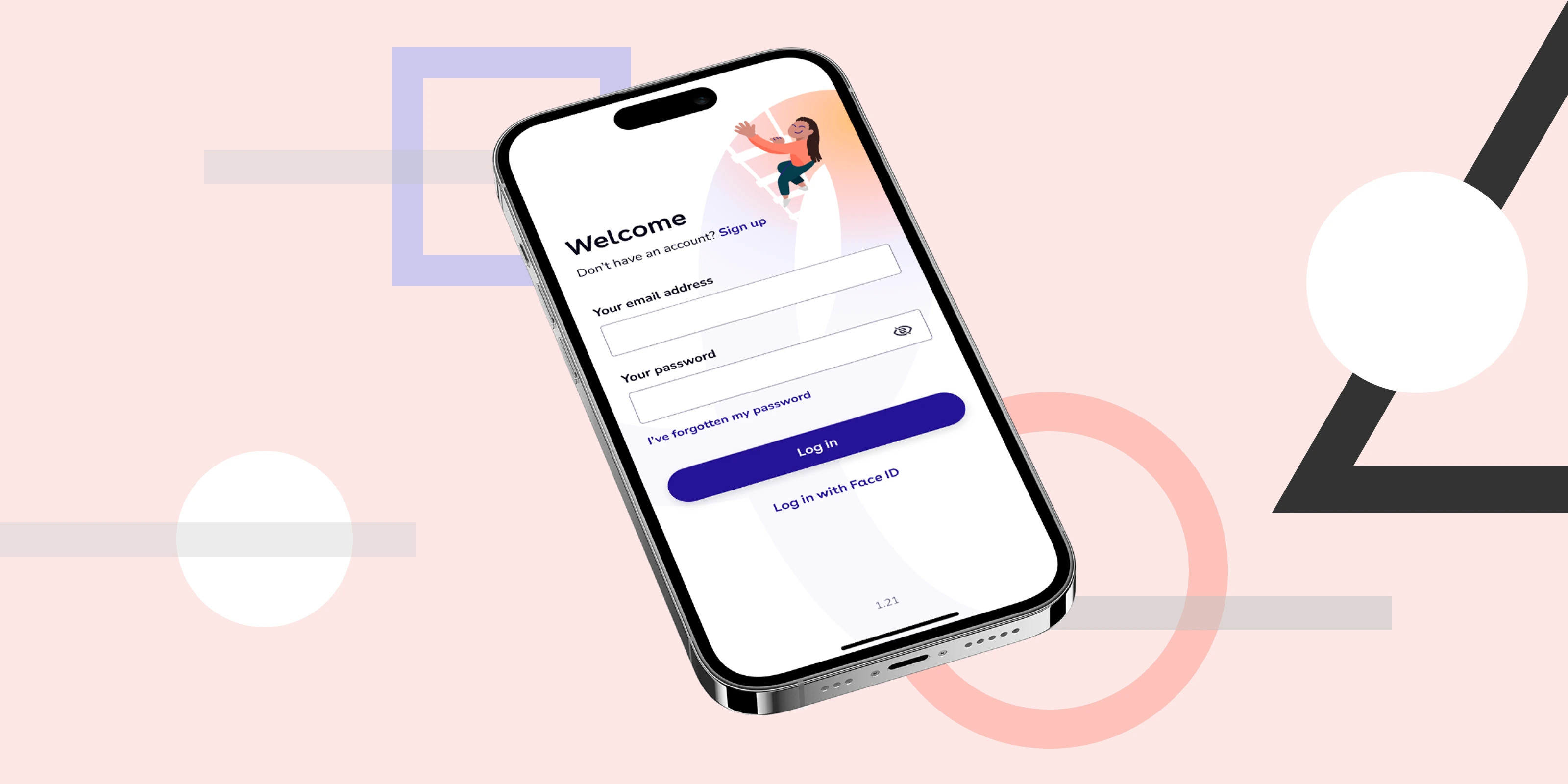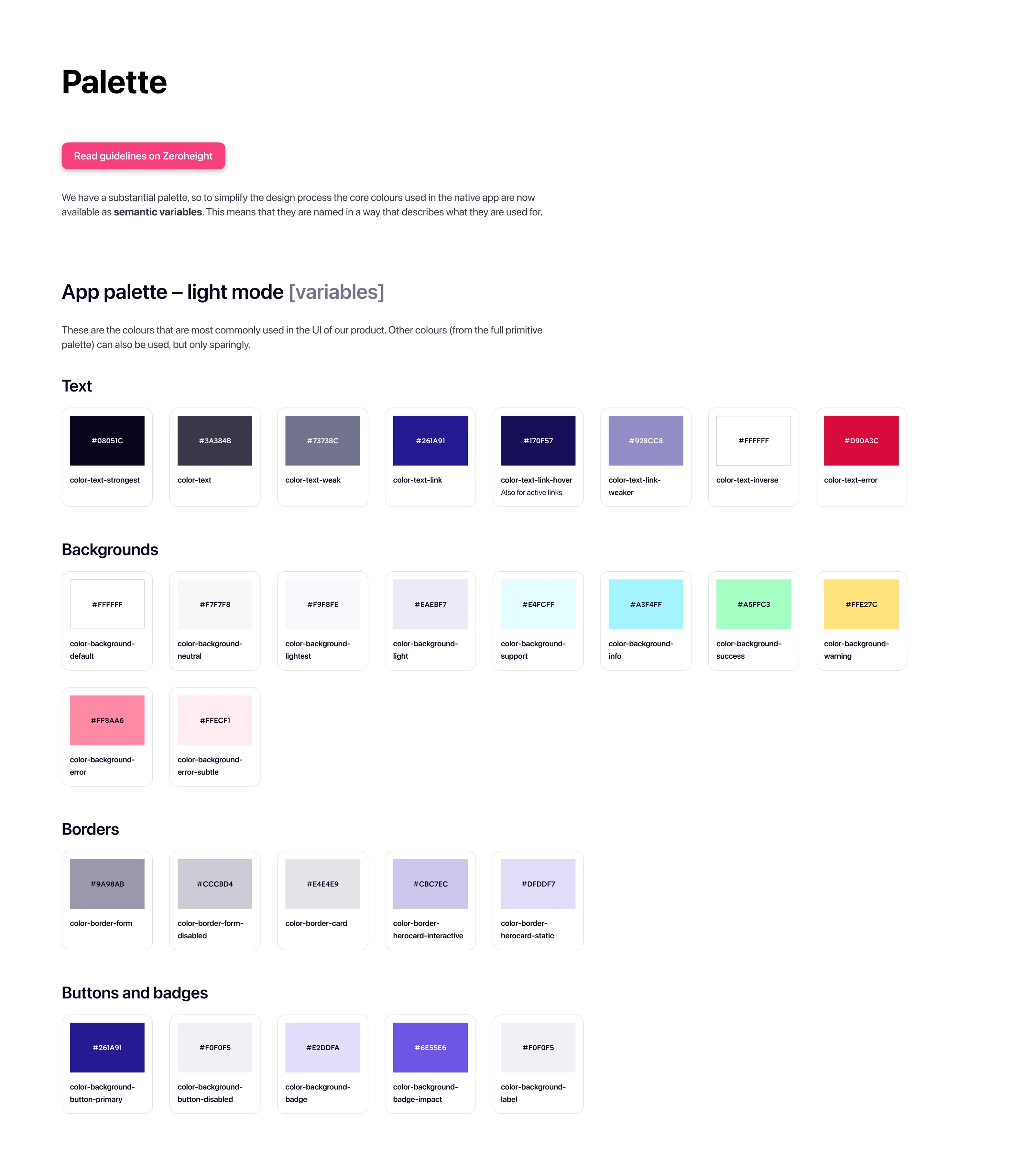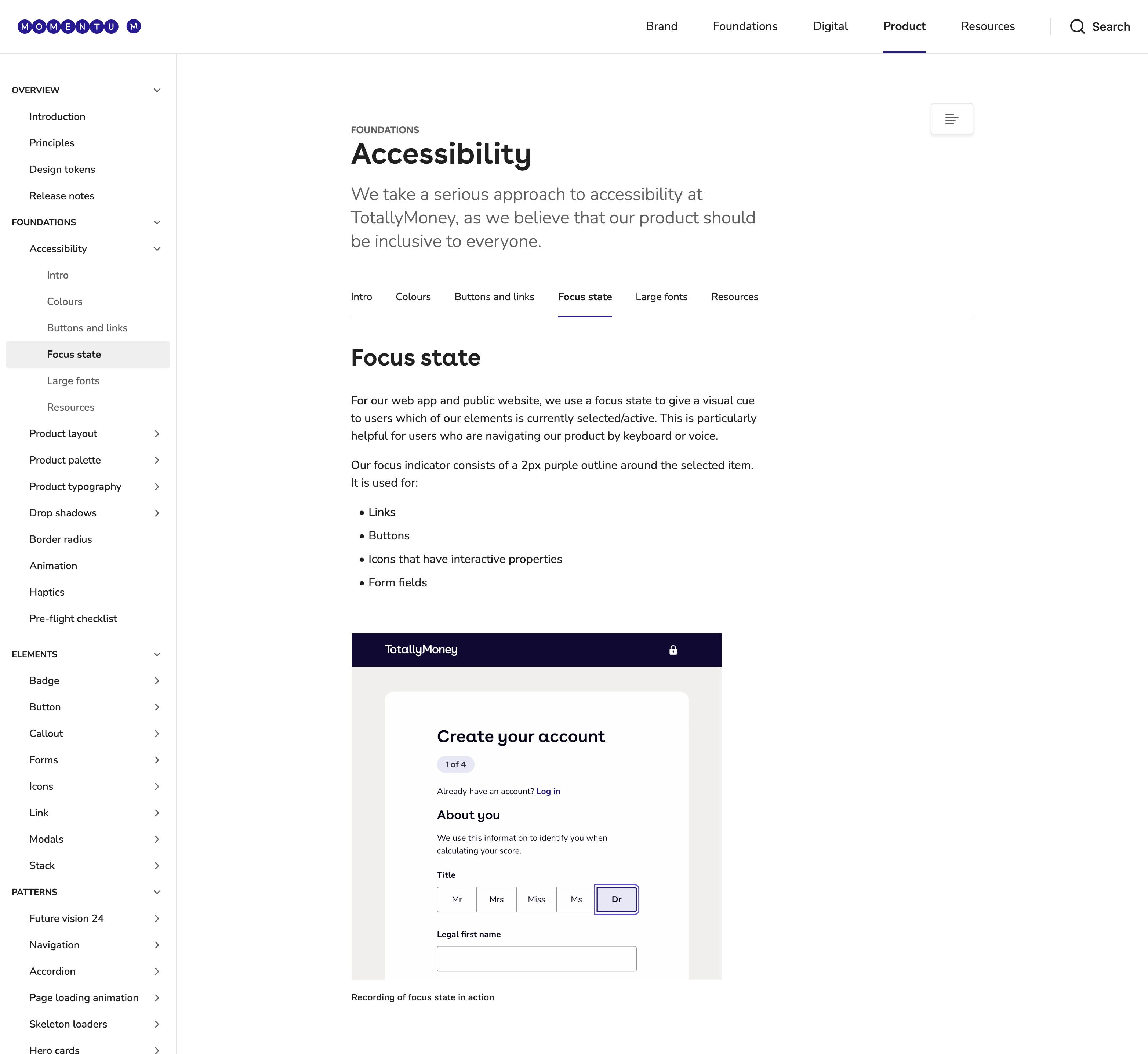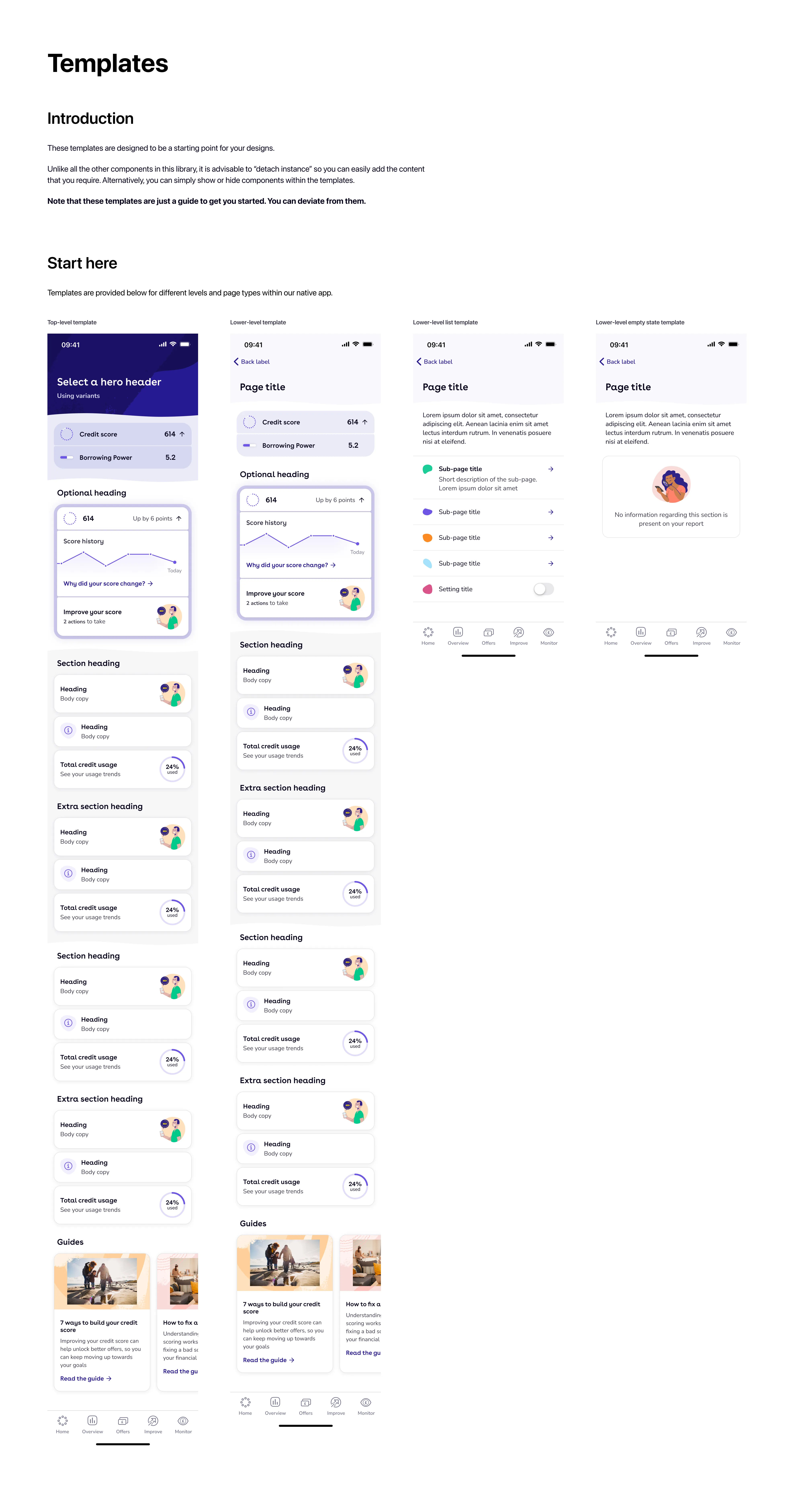
In-house at TotallyMoney | My role: Principal UI Designer
At the time I first joined TotallyMoney, there was an intention to build a design system but few foundations had been laid. There were a couple of disjointed and incomplete Sketch UI library files and an unrelated selection of components in Storybook.
One of my first tasks upon starting my new job was to conduct a UI audit. I discovered that the product had grown organically and as such was full of inconsistencies. There were at least 40 text styles, and multiple versions of each of the palette colours. As a result, it was hugely confusing to work on the product. There was a clear requirement for a robust design system.
The company was still using Sketch at the time. My initial aim was to create a single strong, efficient, more comprehensive UI library file. I set up a completely new structure, based on Brad Frost's atomic principles.
I started with the most basic foundations: the palette, typography, grids, buttons and icons.
At the beginning, the new UI library was universal, covering both the web and native apps. This would change when the Future Vision project focused on the native app first – more on this later.
The images below are screenshots from the Figma libraries, and the Zeroheight buttons are not clickable.

The core product palette

Buttons in the native app
Colour icons from the shared UI library
In the summer of 2020 the design team moved from Sketch to Figma, to facilitate a more collaborative way of working. This decision transpired to be hugely beneficial. I leveraged Figma's excellent 'variants' feature to reduce the overall number of components and make the UI library easier to consume.
I then started to think about how the design and engineering teams could come together to build a proper design system.
I set up a Design System Guild comprising designers and engineers who had an interest in improving and bringing order to our product. To kick this off, and gain exposure for the new guild, I facilitated a workshop in which we all considered what we felt the design system should be. This was extremely useful in engaging the right people, and from it came a team who would initially meet fortnightly.
In addition to the main guild, we soon established a core group of four representatives from web engineering, native engineering, product design (myself) and creative design. We were given the time and space to work out the nuts and bolts of our new system, giving life to the decisions made by the wider guild. We figured out ways to align our Figma UI library and Storybook component libraries, and agreed on shared priorities. After some deliberation we chose Zeroheight as the platform that we would use to tie together the loose ends of our nascent design system and provide appropriate documentation for its consumers.

An example page from our Zeroheight platform
At the same time as the design system started to take shape, my work on the Future Vision project was accelerating. This concentrated initially on the native app, and resulted in a raft of new styles and patterns being created. The single unified UI library I had set up, shared between the web and native apps, now became difficult to maintain. I saw a need to break the library into three: shared foundations, web app and native app.

Badges and labels from the shared UI library

Top navigation and tab bars from the native app

In-app notifications for the native app

Native app templates
To raise awareness of our new design system in the wider company, the core team of four representatives from design and engineering put together a presentation for our weekly company breakfast meeting. We explained in simple terms what a design system is, and launched a competition to come up with a name for our system. This garned unexpected levels of engagement – we ended up with more than 70 entries! Some funny, some clever, some bizarre.
A winner was chosen and the TotallyMoney Momentum design system was born. My former colleague Charlie Lewis created a logo for it, based on the clever concept of a Newton's Cradle.
In addition to the three UI libraries and their accompanying documentation, another important part of the Momentum design system is our set of master files. These contain the key screens from our web app, native app and public website experiences. I created and regularly maintain these files to act as a 'source of truth' for our live product. They are organised as a hierarchical diagram, as shown below.

The native app master file
As our system matures, its tangible benefits are evident. We've seen much improved collaboration between the design and engineering teams, a much speedier workflow and a greater understanding of the way that the product is structured. There is a new focus on making our product as inclusive as possible, with great improvements to accessibility.
We now bear the concerns of a mature design system: when and how to deprecate old styles and components, how to include beta patterns, how to automate as many processes as possible, and so on. I perform regular 'temperature checks' with the system's consumers to ensure that it is still working as well as possible for them.